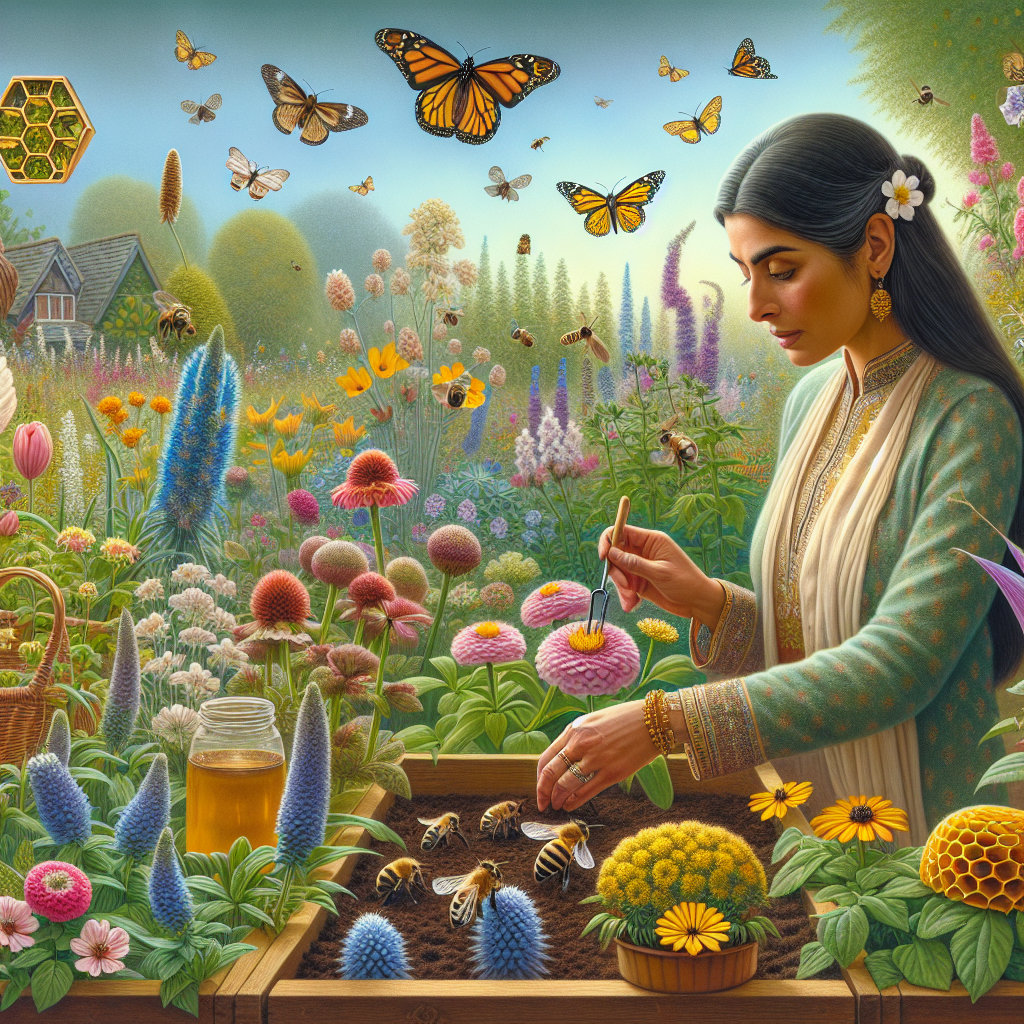Title: Planting for Pollinators: How to Attract Bees and Butterflies
Introduction:
As nature awakens from its winter slumber, spring heralds in a season of blooms and buzzing. Yet, with global reports highlighting the decline of pollinators such as bees and butterflies, there’s a burgeoning necessity to turn our backyards into havens for these crucial creatures. Indeed, according to the United Nations, 75% of the world’s food crops depend at least partly on pollination. Playing a part in this pivotal process can start right in your garden. Here’s how to create a buzz with your planting choices and make a fluttering contribution to your local ecosystem.
Understanding Pollinators and Their Role
Pollinators, including bees, butterflies, birds, and bats, are the unsung heroes of the natural world. They are responsible for carrying pollen from one plant to another, facilitating cross-pollination, and ensuring that plants can reproduce. Such activities directly affect the production of fruits, nuts, and seeds, thereby supporting not only natural wildlife habitats but also human agricultural practices.
Creating Pollinator-Friendly Gardens
- Choose the Right Plants
To attract bees, butterflies, and other pollinators, it’s pivotal to select plants they favor. Think about plants rich in nectar and pollen, such as lavender, salvia, and foxglove. Incorporate species native to your area, as these tend to be more attractive to local wildlife. The National Wildlife Federation provides a comprehensive list of native plants suitable for supporting pollinators. Consider using a variety of plants to ensure blooms throughout the seasons.
- A Diversity of Colors and Shapes
Pollinators are attracted to different colors and shapes depending on their feeding preferences. For example, bees are drawn to blue and yellow, while hummingbirds prefer reds and pinks. Planting a rainbow of colors can cater to a multitude of pollinator species. Moreover, varying the shape of the plants – from tubular flowers that cater to long-tongued bees to flat-topped blooms that provide a landing pad for butterflies – can also increase the likelihood of visits.
- Go Organic
Reducing the use of pesticides is crucial in protecting pollinator populations. Many common garden chemicals are harmful to bees and other beneficial insects. Consider embracing organic gardening methods to prevent inadvertent damage to these vital visitors. The Rodale Institute offers valuable insight into organic practices that can enhance pollinator health.
- Offer Shelter and Water
Apart from flowers, pollinators also need shelter for nesting and protection from predators. Leave some areas of your garden untamed, with leaf litter and dead wood to encourage solitary bee species. Bee houses can also provide nesting sites. Furthermore, a shallow water source can be a welcome resource for thirsty pollinators. Ensure the water is shallow or has landing spots to prevent drowning.
- Avoid Hybrid Plants
While hybrid plants may be visually appealing, they often lack the essential nectar and pollen that pollinators seek. Stick to heirloom and traditional plant varieties when possible to maximize the food available to your insect visitors.
Product Recommendations
For those looking to take a hands-on approach, consider purchasing a Bee House to provide nesting sites for solitary bees. [Product Link Here]. Additionally, organic seeds, such as a mixture of native wildflowers, can be a good start to making your garden a pollinator paradise. [Product Link Here].
Conclusion
By following these tips and making conscious plant choices, you’re not only enhancing the beauty of your backyard but also contributing to the health and success of pollinators. An eco-friendly garden nurtures the bees, butterflies, and other pollinators that play an essential role in the health of our planet. It’s not an exaggeration to state that, by inviting these creatures into our gardens, we’re taking vital steps to ensure the stability of our food systems and the natural world.
Let’s make our gardening practices part of the global effort to mitigate the decline of pollinator populations. It’s through these small, local actions that we weave the net of life-supporting habitats across our planetscape. Happy planting, and may your garden buzz with life!
(Note: For those interested in learning more about the decline of pollinators and how you can make a difference, research articles published by the United Nations and other environmental organizations offer a plethora of information on this topic.)
Remember, a single flower can be the diner for a butterfly or the springboard for a bee’s next journey. So, roll up your sleeves and get those hands dirty – because in the grand choreography of nature, every gardener has a role to play.

